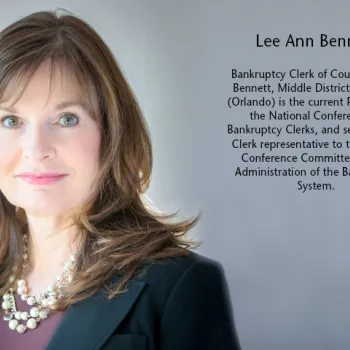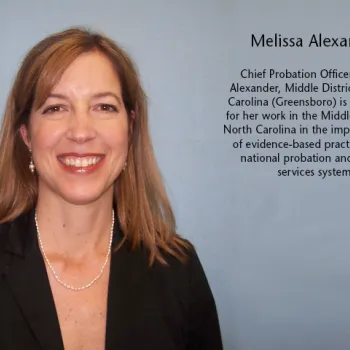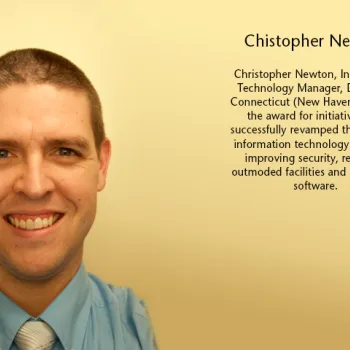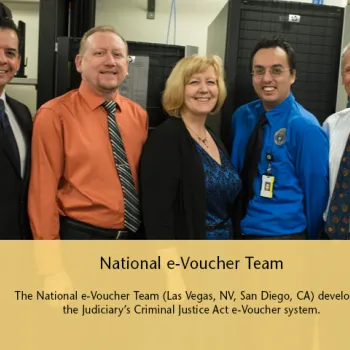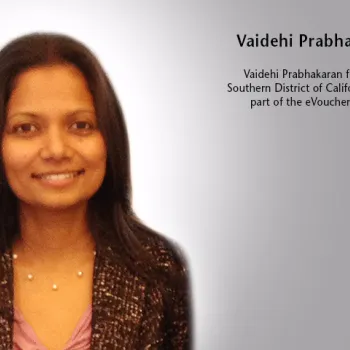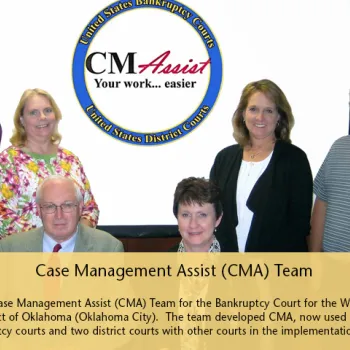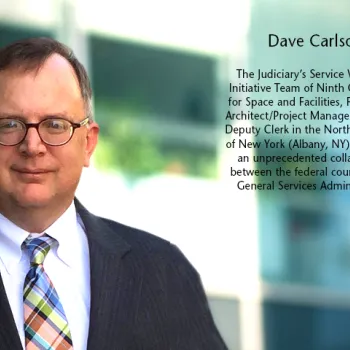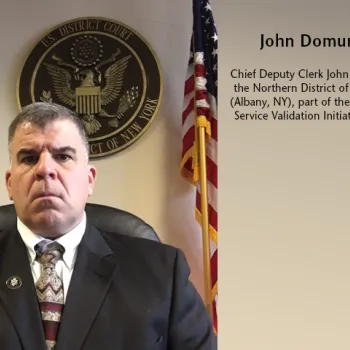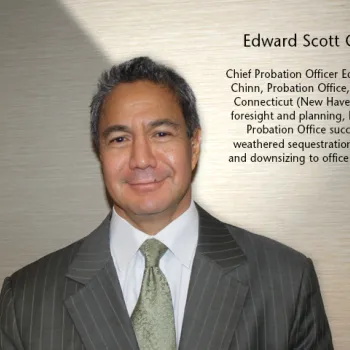The Judiciary demonstrates a commitment to innovative management and administration, planning for new work methods, and preparing for continued volatility in workloads.
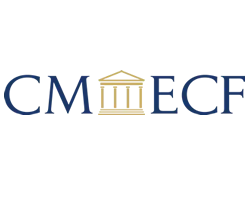
Pilot Court Testing of Initial NextGen CM/ECF Releases Begun
In October 2014, two appellate courts—the Second and Ninth Circuits— began live operations on Release 1.0 of the Next Generation of CM/ECF, the Judiciary’s Case Management and Electronic Case Files System. This release improves the appellate attorney filer interface, will allow Judiciary and public filers to use a single login and password across courts and for the Public Access to Court Electronic Records (PACER). It also lets court staff consolidate different views of case data in a single interface. The software has been revised based on pilot court feedback and became available in September 2015 for use by all other courts of appeals.
Near the end of fiscal year 2015, NextGen also began pilot operations in Alaska and Oregon (bankruptcy) and Kansas (district). Four pilot courts—New Jersey (bankruptcy) and Minnesota and Florida-Northern (district)—began live operations at the beginning of fiscal year 2016 followed by California-Southern (bankruptcy) in 2016. After revisions based on the pilot courts’ experiences, the software will be released to all district and bankruptcy courts.
In addition to the features in the NextGen release for the appellate courts, NextGen features for the district and bankruptcy courts include: a judge-review packet module that allows judges and chambers staff to gather materials relevant to pending motions or other matters, two reports—one per court type—using the new Judiciary enterprise reporting tool, and enhancements to the Central Violations Bureau module for district courts.
A robust, integrated calendar within NextGen CM/ECF is being developed to provide users with many options for case, chambers, and assignment management and many viewing options. It will include the ability to schedule non-case related matters such as vacations, appointments, meetings, and naturalization ceremonies. Special features include the ability to attach notes and documents to calendar entries, to control user access to view the calendar, and to view and add calendar entries from mobile devices.
Prioritization of features to be included in future NextGen CM/ECF releases will be based on input from the courts and from the Project Steering Group of 14 judges and clerks of court.
Bankruptcy Courts Adopting Electronic Debtor Noticing
Since the Debtor Electronic Bankruptcy Noticing (DeBN) was made available for use by all bankruptcy courts in late 2014, 40 bankruptcy courts began offering DeBN to debtors. More bankruptcy courts are expected to go live in the coming months. In this voluntary program, debtors receive court-generated bankruptcy notices and orders by email through the Bankruptcy Noticing Center (BNC). While primarily established as a noticing improvement for debtors, DeBN also reduces BNC costs for debtor noticing by up to 90 percent over the life of a case.
Free Public Access with Multi-Court Voice Case Information System (McVCIS)
In 2015, approximately 1.8 million callers accessed the Multi-Court Voice Case Information System (McVCIS) to listen to bankruptcy case information by telephone. Developed by the Massachusetts Bankruptcy Court in 2014, McVCIS is now used by all of the nation’s 94 districts. The interactive system provides free public access to bankruptcy case information in English and Spanish, including debtors’ names, methods of case disposition, bankruptcy chapter, reported assets, case status, and discharge date. In collaboration with the Massachusetts Bankruptcy Court and a few district courts, the AO is now working to expand McVCIS for use in the district courts.
Group Appointed to Bolster MJSTAR Training and Awareness
A working group is developing training materials on how to use the Magistrate Judge Statistics Through Automated Records (MJSTAR) functionality in the district CM/ECF system. The goal is to achieve more accurate MJSTAR workload statistics for all United States magistrate judges and to increase awareness throughout the Judiciary of the importance of MJSTAR data.
MJSTAR statistics are of critical importance to the Judicial Conference and its Magistrate Judges Committee in evaluating district court requests for the authorization of new magistrate judge positions, determining whether courts may fill vacant magistrate judge positions, and deciding whether courts may recall retired magistrate judges for additional service.
Group members include a magistrate judge, a clerk of court, and several clerk’s office and chambers staff with expertise in MJSTAR, district CM/ECF systems, and court training.
Judiciary’s Legacy Statistical Mainframe Replaced with NewSTATS
In 2015, the multi-year effort to remove Judiciary data from a mainframe computer and place it into the New Streamline Timely Access to Statistics (NewSTATS) system was completed. NewSTATS replaces the legacy statistical system with a data warehouse that uses business intelligence tools to collect, process, analyze and report court caseload data. After data for the grand jury, petit jury, and bankruptcy appellate program areas were migrated from the legacy systems, NewSTATS became the system of record for all program areas. The completion of this initiative will result in improved data quality, enhanced feedback to the courts, and a reduction in costs equal to approximately $1 million per year by ending the Judiciary’s use of the legacy system.
New Tools Available for Better Jury Management
Ninety-one district courts are live on eJuror, a public portal for the Jury Management System (JMS) that allows jurors to answer qualification questionnaires and provide summons information online. All remaining courts are expected to go live in 2016. eJuror saves resources and improves public access.
As of the end of 2015, 91 courts also were using the Integrated Voice Response system, an enhancement to the JMS that lets jurors check the status of their service and obtain reporting instructions by phone.
Additionally, to save courts time with juror check-in, a secure kiosk was developed so jurors can check in electronically upon reporting to the jury assembly room. The kiosk pilot program began in August in four district courts: Southern District of Alabama, Central District of California, Northern District of Illinois, and the Western District of New York. The courts vary in size, and part of the pilot program will determine how kiosks are best used in small, medium, and large courts, and also what improvements may be needed. The pilot is expected to last into 2016.
In December 2015, a jury administrator workshop trained court staff on automated jury tools and provided guidance on proper completion of juror forms and how to handle jury challenges.
Resources Identified to Help Manage Pro Se Cases
An advisory group completed a two-year study to identify resources and best practices to assist district courts with the management of local pro se and prisoner pro se workloads. The information is intended to help courts establish, maintain, and bolster their pro se programs and case management programs.
Resources identified by the working group include customizable complaint forms, Frequently Asked Questions on e-filing and e-service, recommendations for initial case processing and screening and for processing in forma pauperis applications, a guide for creating a handbook for pro se litigants, a sampling of pro bono programs and resources, and a list of IT products for managing pro se cases.
2015 Director’s Leadership Program Residents Selected
Two residents were selected for the 2015-2016 Director’s Leadership Program. The year-long residency offers mid- to senior-level court staff the opportunity to work on national-level projects while developing a greater understanding of national issues and policies.

Michael D. Croom, Director of Administrative Services, Southern District of Texas District Court, joins the AO Department of Administrative Services to work with representatives from the Treasury, various district courts, and an AO project team. They will elicit requirements for, then design, develop, and implement the Judiciary’s strategy for reducing the number of paper checks it disburses for juror compensation and reimbursement by moving check recipients to electronic or other alternative payment mechanisms. Currently, the Judiciary distributes over 350,000 paper check payments to jurors each year. Debit cards will save resources and speed payments to jurors.

Jonathan D’Andries, Programmer/Systems Administrator, Western District of Wisconsin District Court, joins the Department of Technology Services (DTS) to help implement a national Collaborative Applications Development (CAD) initiative. The CAD initiative is expected to improve the coordination of national and local software development efforts.
Court Initiatives Recognized by 2015 Director’s Awards
The Director’s Awards, given by the Director of the Administrative Office, recognize the outstanding leadership and excellence in court operations of federal court employees nationwide.
Director’s Award for Outstanding Leadership
This award recognizes managerial-level employees who demonstrate exemplary stewardship of court resources, while advancing programs with a nationwide impact that improved service to the public. The 2015 recipients are:
Bankruptcy Clerk of Court Lee Ann Bennett, Middle District of Florida, is the President of the National Conference of Bankruptcy Clerks, and serves as the clerk representative to the Judicial Conference Committee on the Administration of the Bankruptcy System. She has served on numerous advisory groups and committees studying such key issues for the Judiciary as shared administrative services, work measurement, and customer service.
Bennett has shown exemplary stewardship of resources by meeting space-reduction goals, reducing noticing costs and embracing technology to save the courts money. She has promoted workforce productivity while improving service to the public, working with local bar associations to assist pro se filers in each division through the creation of needed legal clinics.
Chief Probation Officer Melissa Alexander, Middle District of North Carolina, is recognized for her work in the implementation of evidence-based practices in the national probation and pretrial services system. She has worked closely with the Administrative Office, sharing her district’s experience with field application of the evidence-based blueprint, and developing a partnership with the National Implementation Research Network to assist those efforts.
Alexander has actively promoted understanding and advancement of risk-assessment instruments and core correctional practices through presentations to federal judges, federal public defenders, and law enforcement. In addition, she inaugurated a number of cost-savings strategies, innovations, and expenditure reductions that allowed the Middle District of North Carolina probation office to accomplish its mission while reducing revocation rates and improving services.
Director’s Awards for Excellence in Court Operations
This award recognizes employees who have contributed to excellence in operating with economy and efficiency, in providing innovations that improve service, or in establishing community outreach programs or enhancing the public’s awareness of the federal Judiciary. The 2015 recipients are:
Christopher Newton, Information Technology Manager, District of Connecticut, received the award for initiatives that successfully revamped the district’s information technology program, improving security, replacing outmoded facilities, and upgrading software.
Under his direction, the district introduced high-tech courtrooms, reduced its server footprint, implemented a new public website and a wireless access pilot program for attorneys in court space, and converted an outdated telephone system to the National IPT system, in addition to other IT projects that saved money and improved service to the court family and the public.
The National eVoucher Team developed the Judiciary’s Criminal Justice Act eVoucher system, which vastly improves financial management of CJA cases. eVoucher enables the electronic submission, management, and approval of CJA vouchers and includes extensive reporting capabilities. It is now deployed to all court units.
Team members are Clerk of Court Lance Wilson, Chief Deputy Clerk Cynthia Jensen, Director of Special Projects Vincente Angotti, and Systems Administrators Thomas Pyle and Guillermo Rojas from the District Court of Nevada; and Senior Software Developer Vaidehi Prabhakaran from the District Court for the Southern District of California.
The Case Management Assist (CMA) Team for the Bankruptcy Court for the Western District of Oklahoma developed CMA, now used by 37 bankruptcy courts and two district courts, with other courts in the implementation stage. CMA works alongside CM/ECF to distribute, organize, prioritize, and assign work for a case administrator, among other capabilities, including use by financial officers to monitor payments due, and by judges and clerks to remain current on court filings.
Team members are IT Manager Scott Bellingham, Administrative Support Analyst Annamarie Cooper, Automation Supervisor Ronn Folk, Bankruptcy Clerk of Court Grant Price, Chief Deputy Bankruptcy Clerk of Court Sheila Sewell, Operations Manager Penny Wallis.
The Judiciary’s Service Validation Initiative Team, with team members Ninth Circuit Assistant Circuit Executive for Space and Facilities Clifford Harlan, Fifth Circuit Architect/Project Manager Dave Carlson, and Chief Deputy Clerk John Domurad in the Northern District of New York, represents an unprecedented collaboration between the federal courts and the GSA aimed at maximizing the efficiency and improving the overall quality of services the courts receive from GSA.
The team identified the means and methods to enhance the Judiciary’s ability to clarify and make more transparent and accurate the process by which GSA develops overtime utilities estimates for tenants. Their efforts already have generated concrete recommendations that will improve court support on a national level for years to come.
Chief Probation Officer Edward Scott Chinn, Probation Office, District of Connecticut, thanks to foresight and planning, helped his Probation Office successfully weather sequestration cutbacks and downsizing to office personnel.
Chinn created a “support court” for offenders under supervision, which in addition to other innovations initiated by Chinn, helped to ensure that the district’s re-arrest and revocation rates are now well below the national rates. His innovations have allowed the office to maximize offender treatment dollars and the district’s law enforcement allocation.
Court Interpreting Events
In fiscal year 2015, district courts used interpreters in 280,254 court events, compared to 287,579 events reported the prior year. Overall, 116 different languages were used in court events during 2015. Spanish remains the most used language for interpreters in the courts, accounting for 96.6 percent of all reported interpreting events. The top 10 languages that required interpreting in the federal courts were Spanish (270,755); Mandarin (1,123); Russian (1,016); Arabic (942); Cantonese (507); Korean (479); Punjabi (469); Portuguese (399); Vietnamese (357); and Haitian Creole (355).
Travel Reduced with Telephone Interpreting Program
The Telephone Interpreting Program (TIP) is a resource available to the courts that provides remote interpretation in short court proceedings where certified or otherwise qualified interpreters are not locally available. In fiscal year 2015, about 59 districts in approximately 107 locations received telephone interpreting services. TIP is cost-effective because it reduces the need for an interpreter to travel to distant court locations and allows an interpreter to serve multiple proceedings and locations in the same day.
The TIP is a national web-based application, which was moved this year to a modernized software platform that can accommodate growing demands on the system. The new TIP application successfully launched in June 2015.
In fiscal year 2015, the total estimated savings from telephone interpreting was more than $1.4 million. Since fiscal year 2001, TIP has saved the Judiciary approximately $17 million and has been used to provide services in more than 49,000 events.
Annual Report 2015
- Annual Report 2015
- Funding/Budget
- The Courts and Congress
- The Federal Bench in 2015
- Accountability and Resource Utilization
- Facilities and Security
- Public Outreach
- Court Operations and Case Management
- Defender Services
- Probation and Pretrial Services
- Financial and Human Resource Initiatives
- Information Systems and Cybersecurity
- Recent and Proposed Amendments to the Federal Rules
- In Profile

